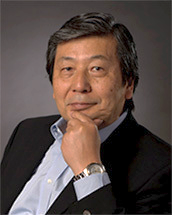Control-Coherent Koopman Modeling and Optimal Control for Robotics and Neuro-Motor Control
Events | Mechanical Engineering
Control-Coherent Koopman Modeling and Optimal Control for Robotics and Neuro-Motor Control

This talk presents a new Koopman operator approach to the modeling, prediction, and control of complex dynamical systems governed by multiple local dynamics, which are switched depending on the location of state in a segmented state space. In human neuro-motor control, e.g. sit-to-stand transition, the process consists of multi-phase local dynamics starting off at a relaxed sitting posture to the standing posture with stabilizing feedback control. It will be shown that a Koopman operator combines the diverse local dynamics into a globally linear model allowing for smooth, efficient control across the multi-phase local dynamics. Human gait is a switched dynamical process governed by diverse local dynamics, which are switched as each leg makes and breaks contact with a ground. Koopman operators can subsume the segmented dynamics within a globally linear model amenable for control. Soccer and hockey players can dribble and shoot a ball/pack dexterously and strategically. Koopman operators can represent such contact-rich handling of objects as a unified, globally linear process. To make this Koopman-based modeling possible, two fundamental challenges must be overcome. One is that, strictly speaking, the original Koopman operator theory is applicable only to autonomous systems with no control input. The second fundamental challenge is that the existence of a Koopman operator cannot be guaranteed for dynamic systems with discontinuities. For the first challenge, an emerging method, termed Control-Coherent Koopman (CCK) modeling, will be introduced. CCK utilizes an inherent property of actuator dynamics, where input terms appear linearly in the governing nonlinear dynamics. For the second challenge, conventional discontinuous contact modeling will be replaced by causal physical modeling, which is continuous. It will be shown that viscoelastic models of contact are not only natural, realistic, and accurate but can also satisfy one of the key conditions on CCK formulation. Human-like dexterity and intelligence in performing multi-phase, segmented dynamical tasks can be elucidated as a rather simple linear control if the human/machine can learn a globally linear dynamic model with use of effective embeddings. Potential impacts of Koopman operators upon neuro-motor control will be discussed at the end.